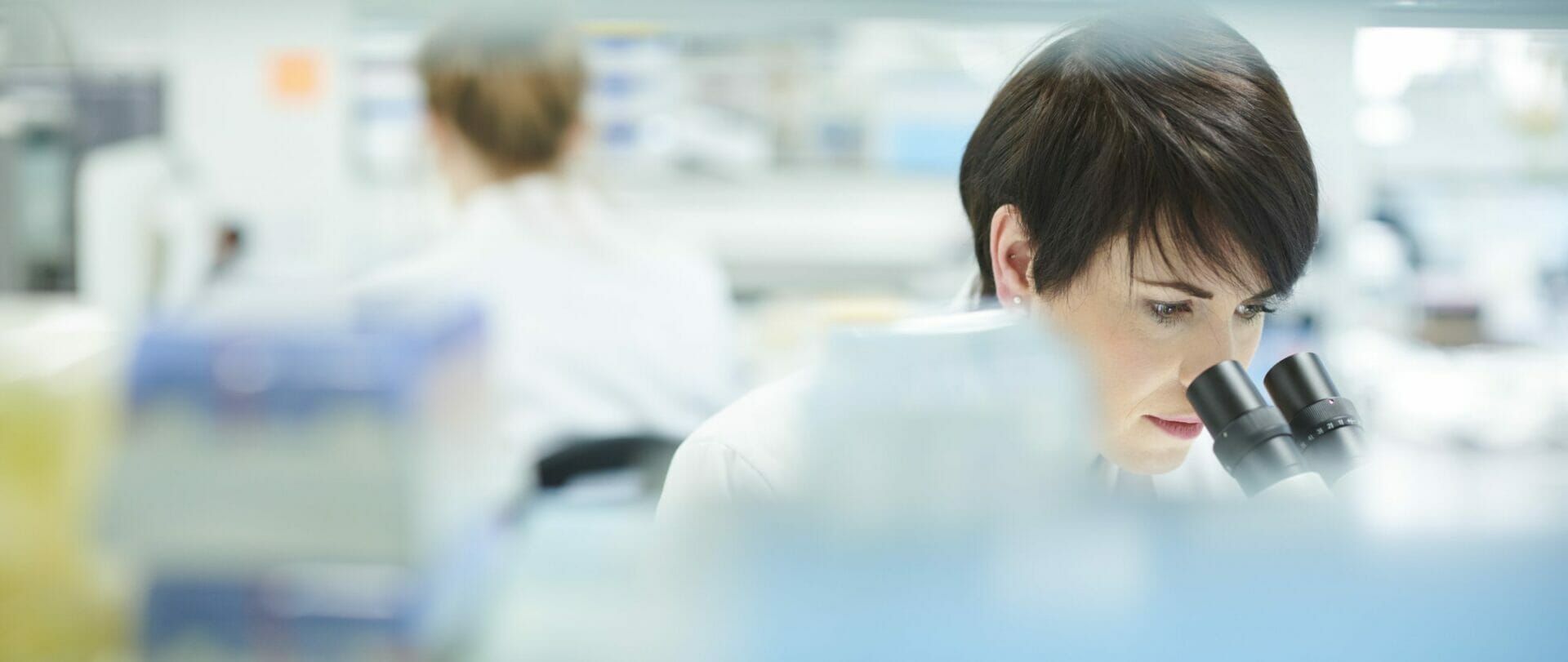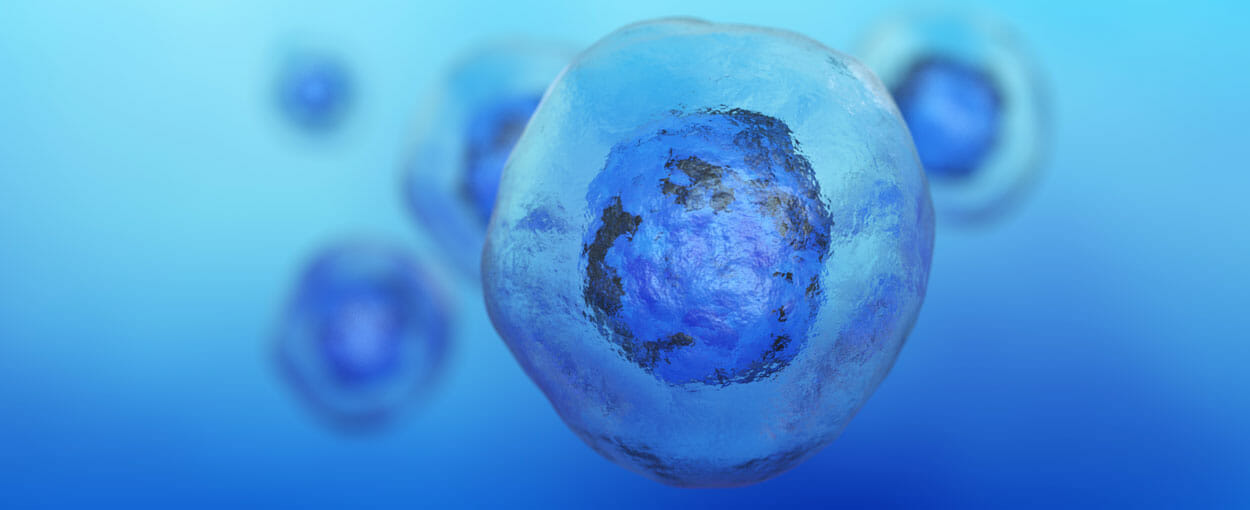The table below lists examples of cells that have been successfully tested on the VitroGel system. To get the best results from the VitroGel system, the hydrogel conditions can be optimized depending on cell types and components of culture media.A test of cell growth in a gradient of hydrogel concentrations is recommended for each cell line.
| Cell types/applications | Product used | Culture medium | Dilution (v/v) |
|---|---|---|---|
| Hela cells | VitroGel RGD | DMEM with 10%FBS | 1: 3 |
| MCF-7 breast cancer cells | VitroGel RGD | DMEM with 10%FBS | 1: 3 |
| HCT-8 Human colon cancer cells | VitroGel RGD | RPMI 1640 with 10% FBS | 1: 3 |
| Human iPSCs | VitroGel RGD | mTeSR1 | 1: 3 |
| Human embryonic kidney 293 cells | VitroGel RGD | DMEM with 10%FBS | 1: 3 |
| Beta TC3 cells | VitroGel RGD | DMEM | 1: 3 |
| Ins-1 cells | VitroGel RGD | RPMI 1640 | 1: 3 |
| BL5 human beta cells | VitroGel 3D | DMEM with 10%FBS | 1: 3 |
| Priess human lymphoblastoid cells | VitroGel 3D | RPMI 1640 with 10% FBS | 1: 3 |
| CD8+ T cells | VitroGel 3D | RMPI 1640 with 10% FBS | 1: 3 |
| Human islets | VitroGel RGD | CMRL 1066 medium | 1: 3 |
| DLD1 (colon) | VitroGel RGD | high glucose DMEM with 10%FBS | 1: 3 |
| HepG2 (liver) | VitroGel RGD | high glucose DMEM with 10%FBS | 1: 3 |
| HuH7 | VitroGel RGD | DMEM | 1: 3 |
| Prostate cancer line | VitroGel RGD | RPMI 1640 | 1: 3 |
| H460 cells | VitroGel RGD | DMEM with 10%FBS | 1: 3 |
| A549 cells | VitroGel RGD | DMEM with 10%FBS | 1: 1 |
| MCF-12A | VitroGel RGD | DMEM-F12 | 1: 3 |
| SKB3 cells | VitroGel RGD | DMEM with 10%FBS | 1: 3 |
| MDA-MB-231 | VitroGel RGD | Mammosphere medium | 1: 3 |
| T47D | VitroGel RGD | RPMI 1640 with 10% FBS | 1: 3 |
| Au565 | VitroGel RGD | RPMI 1640 with 10% FBS | 1: 3 |
| Human Nthy-ori 3-1 cells | VitroGel 3D | RPMI 1640 with 10% FBS | 1: 3 |
| PDX models of cervix cancer | VitroGel 3D | Alpha MEM | 1: 2 |
| 4T1 murine breast cancer cells | VitroGel RGD | RPMI 1640 with 10% FBS | 1: 2 |
| Melanoma cell lines (M111, M101, and CG-1241) | VitroGel RGD | RPMI 1640 | 1: 3 |
| BT 474 | VitroGel RGD | DMEM+10% FBS | 1: 3 |
| OVCAR-3 | VitroGel RGD | RPMI-1640+10% FBS | 1: 1 |
| U87-MG | VitroGel RGD | EMEM+10% FBS | 1: 2 |
| UD 145 | VitroGel RGD | EMEM+10% FBS | 1: 3 |
| HCT116 | VitroGel RGD | McCoy's 5A+10% FBS | 1: 3 |
Case Studies
VitroGel has been successfully used on different projects with many cell lines. Scientists are impressed by this incredibly easy to use hydrogel system and happy with the promising results. The case studies below show both 3D cell culture and 2D coating of VitroGel system. In each case, all images were taken under the same scale.
Case 1: Beta TC3 cells (used VitroGel RGD for 3D culture)
Seeding number: 5×105 cells/mL
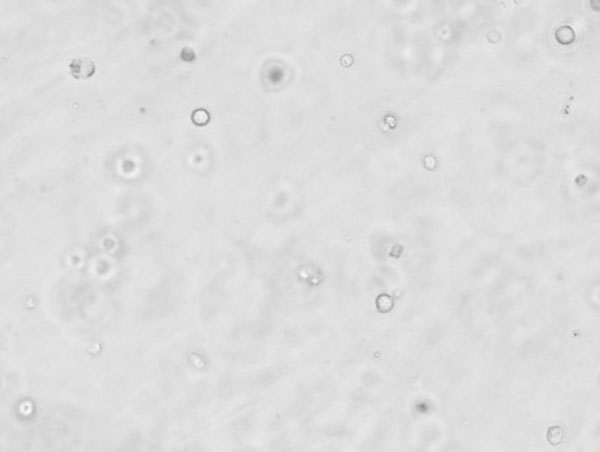
Day 1
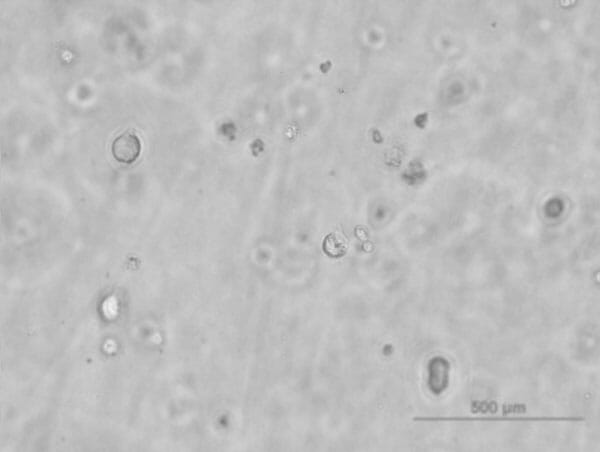
Day 5
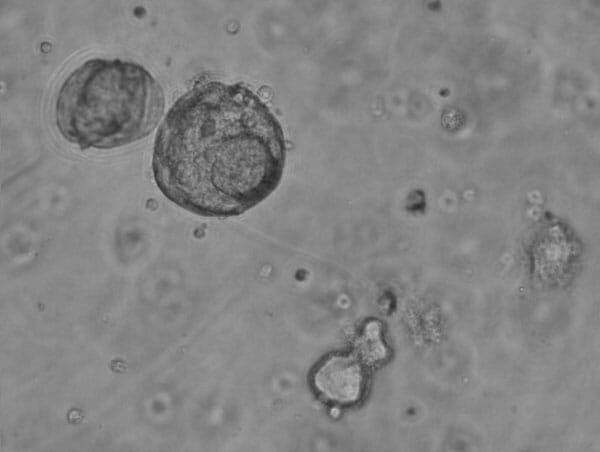
Day 14
Case 2: Ins-1 cells(used VitroGel RGD for 3D culture)
Seeding number: 5×105 cells/mL
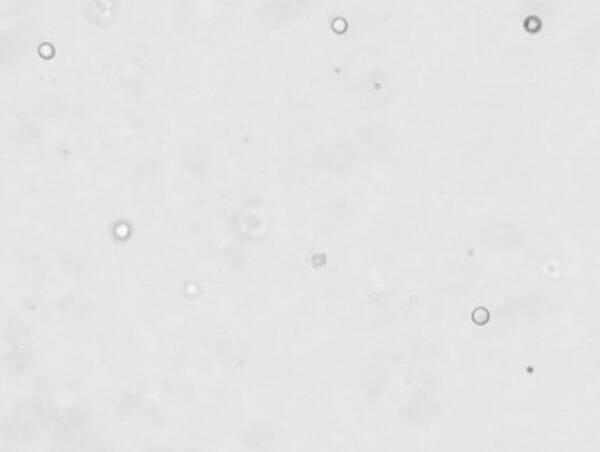
Day 1
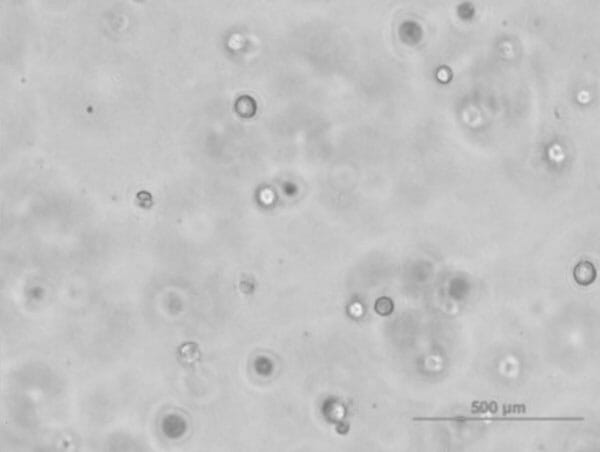
Day 5
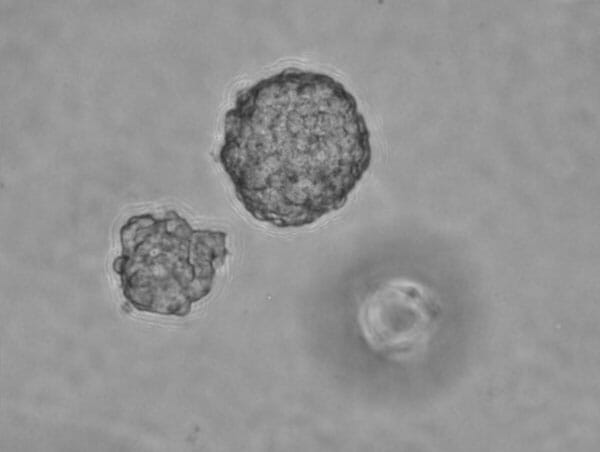
Day 14
Case 3: Human Foreskin Fibroblast (hFS) derived Induced Pluripotent Stem Cells (iPSCs) (used VitroGel RGD for both 2D coating and 3D culture)
Seeding number: 2.5×105 cells/mL
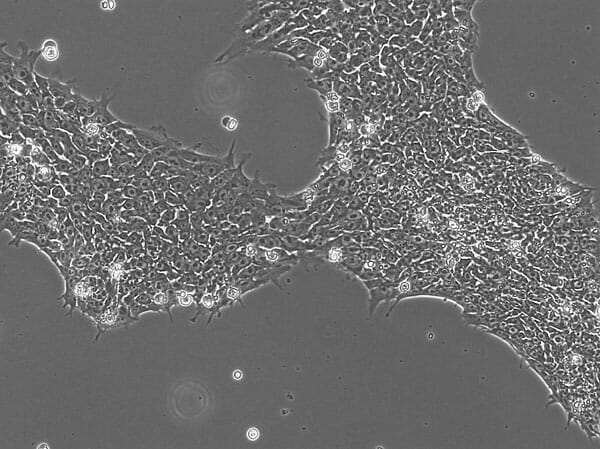
hFS iPSCs grown on 2D Matrigel coating (comparison)
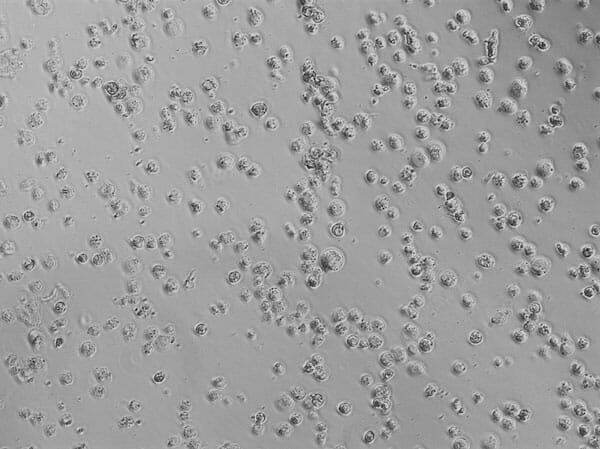
Culture on 2D VitroGel RGD coating (Day 1)
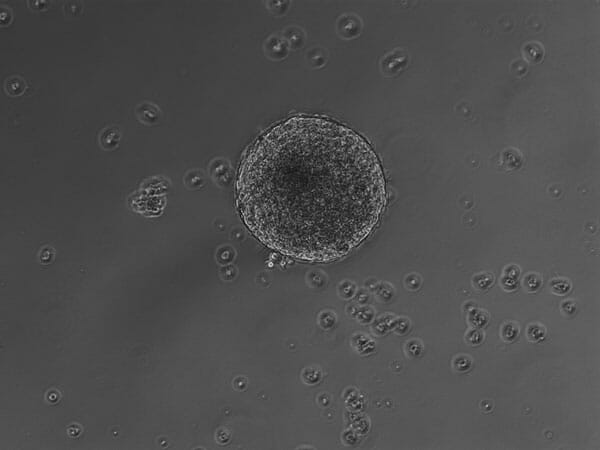
Culture on 2D VitroGel RGD coating (Day 7)
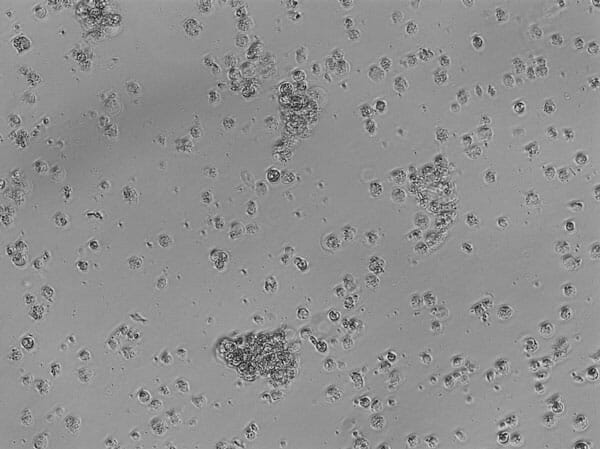
3D culture using VitroGel RGD (Day 1)
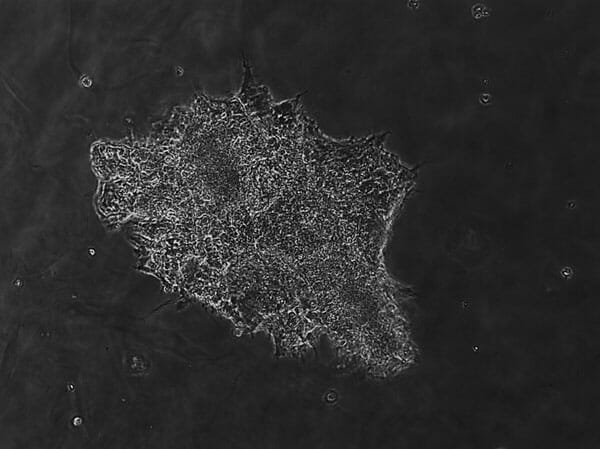
3D culture using VitroGel RGD (Day 7)
Summary
- Both 2D coating and 3D culture are suitable for hFS iPSC culture
- hFS iPSCs in 2D coating conditions are more defined and rounded in morphology compared to 3D culture conditions
- Colonies are rounded as expected within 7 days in hydrogel
Case 4: Beta Lox 5 (BL5) cells (used both VitroGel 3D and VitroGel RGD for 2D coating and used VitroGel 3D for 3D culture)
Seeding number: 2.5×105 cells/mL
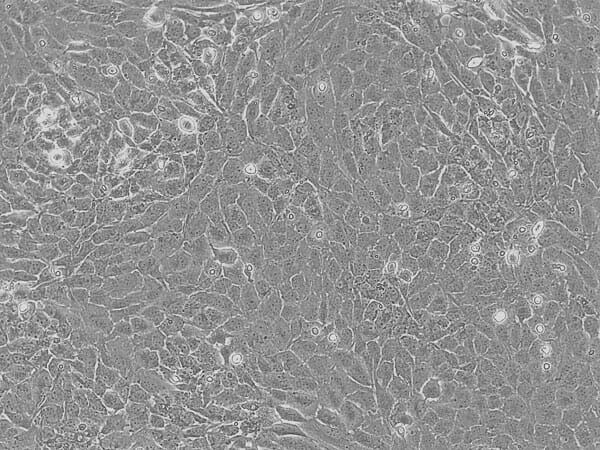
2D cell culture on regular well-plate (control)
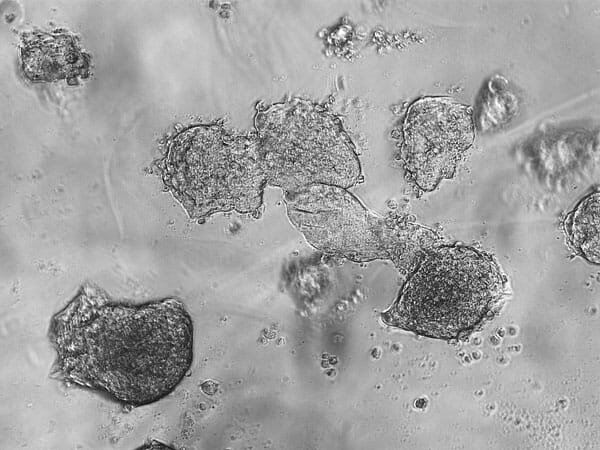
Culture on 2D VitroGel 3D coating for 7 days
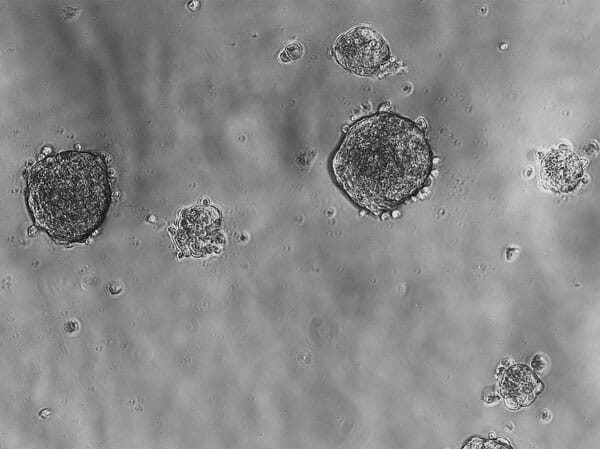
Culture on 2D VitroGel RGD coating for 7 days

Normal human islets grew in suspension (Comparison)
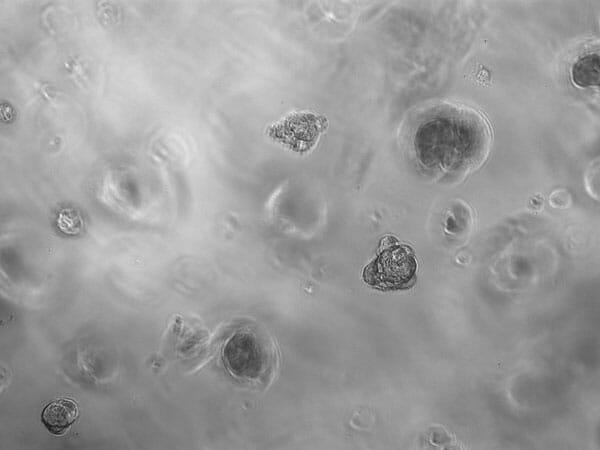
3D culture using VitroGel 3D(Day 1)
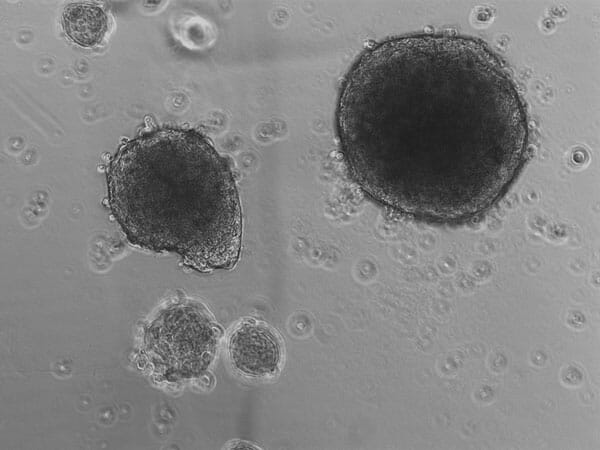
3D culture using VitroGel 3D(Day 7)
Summary
- BL5 cells grow very well in both 2D coating and 3D culture of VitroGel 3D system
- Under 2D coating, BL5 cells form colonies and seem to be flat
- Under 3D culture of VitroGel 3D, BL5 cells form islet-like structures very similar to normal human islets
Case 5: Human Embryonic kidney (HEK293) cells (used VitroGel RGD for 3D culture)
Seeding number: 2.5×105 cells/mL
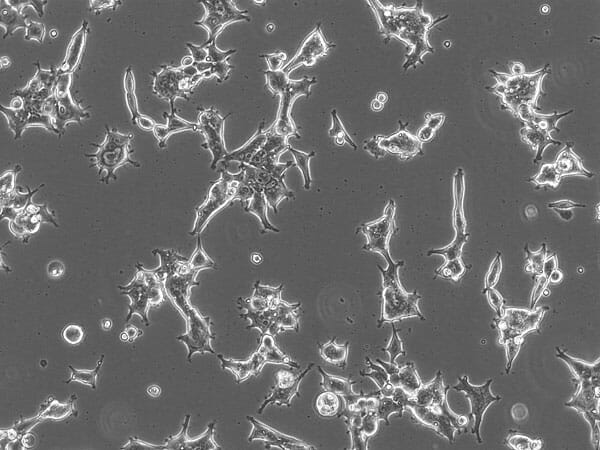
2D cell culture on regular well-plate (control)
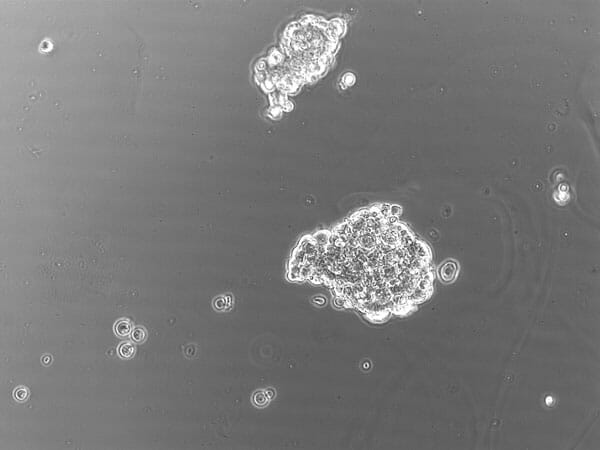
3D culture using VitroGel RGD (Day 7)
Summary
- HEK 293 cells grow in the form of clusters in 3D culture within VitroGel RGD
Case 6: Human lymphoblastoid Priess cells (used VitroGel 3D for both 2D coating and 3D culture)
Seeding number: 2.5×105 cells/mL
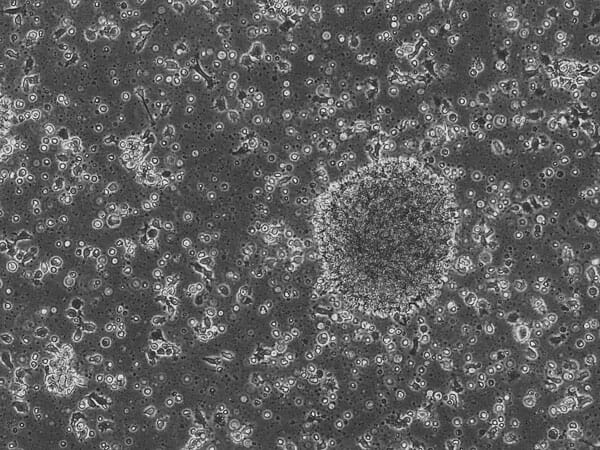
Priess cells grown in suspension (control)
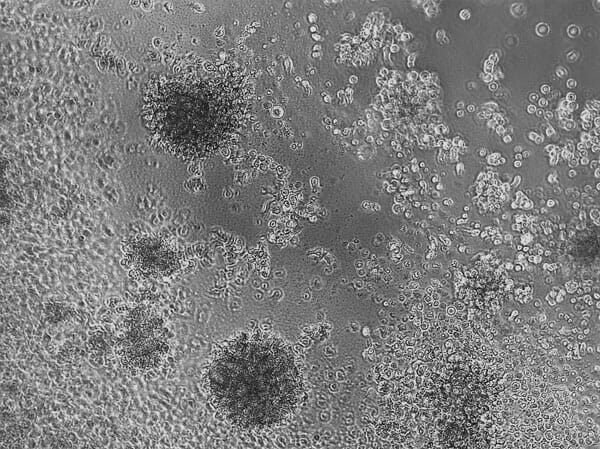
Culture on 2D VitroGel 3D coating for 7 days
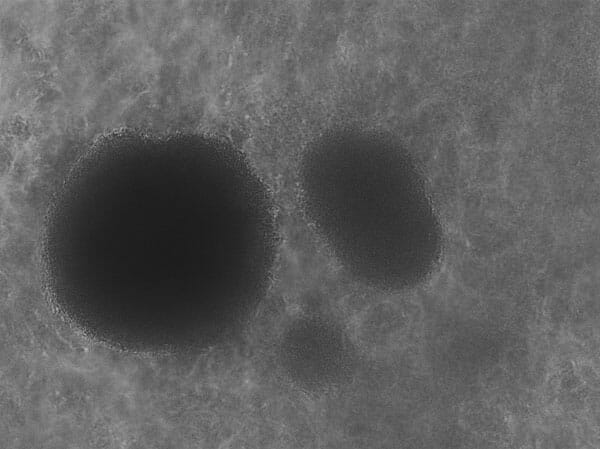
3D culture using VitroGel 3D (Day 7)
Summary
- Priess cells grown in both 2D coating and 3D culture conditions are similar to cells grown in suspension
Case 7:CD8+ T cells (use VitroGel 3D for 3D culture)
Seeding number: 2.5×105 cells/mL
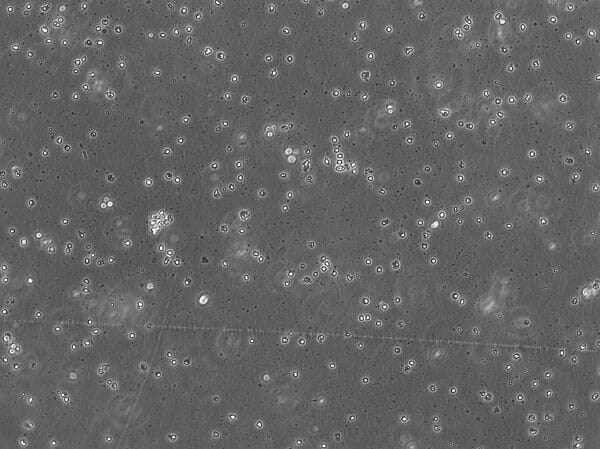
CD8+ T cells grew in suspension (control)

3D culture using VitroGel 3D (Day 7)
Summary
- CD8+ T cells look vibrant in 3D culture conditions of VitroGel 3D

